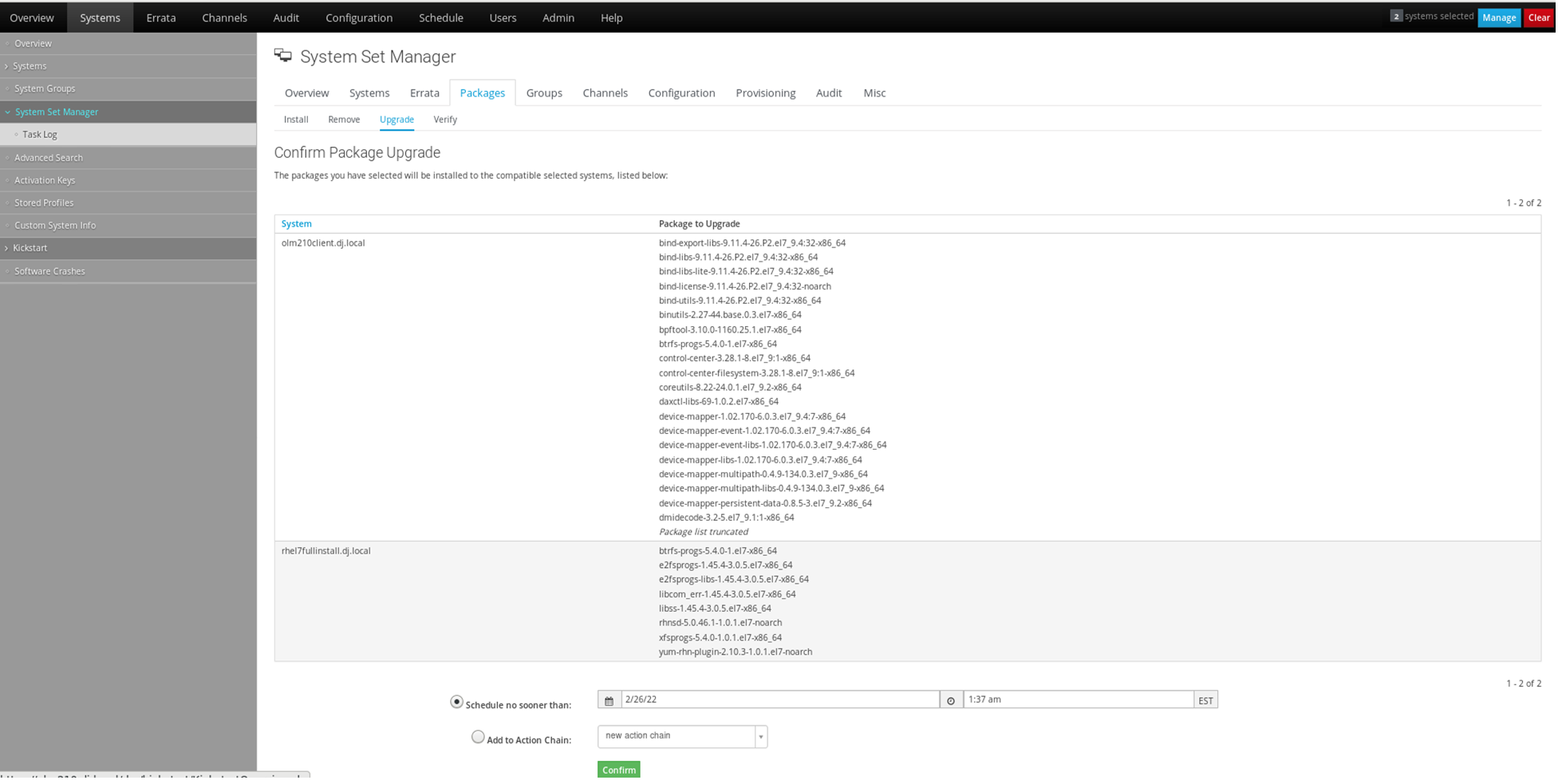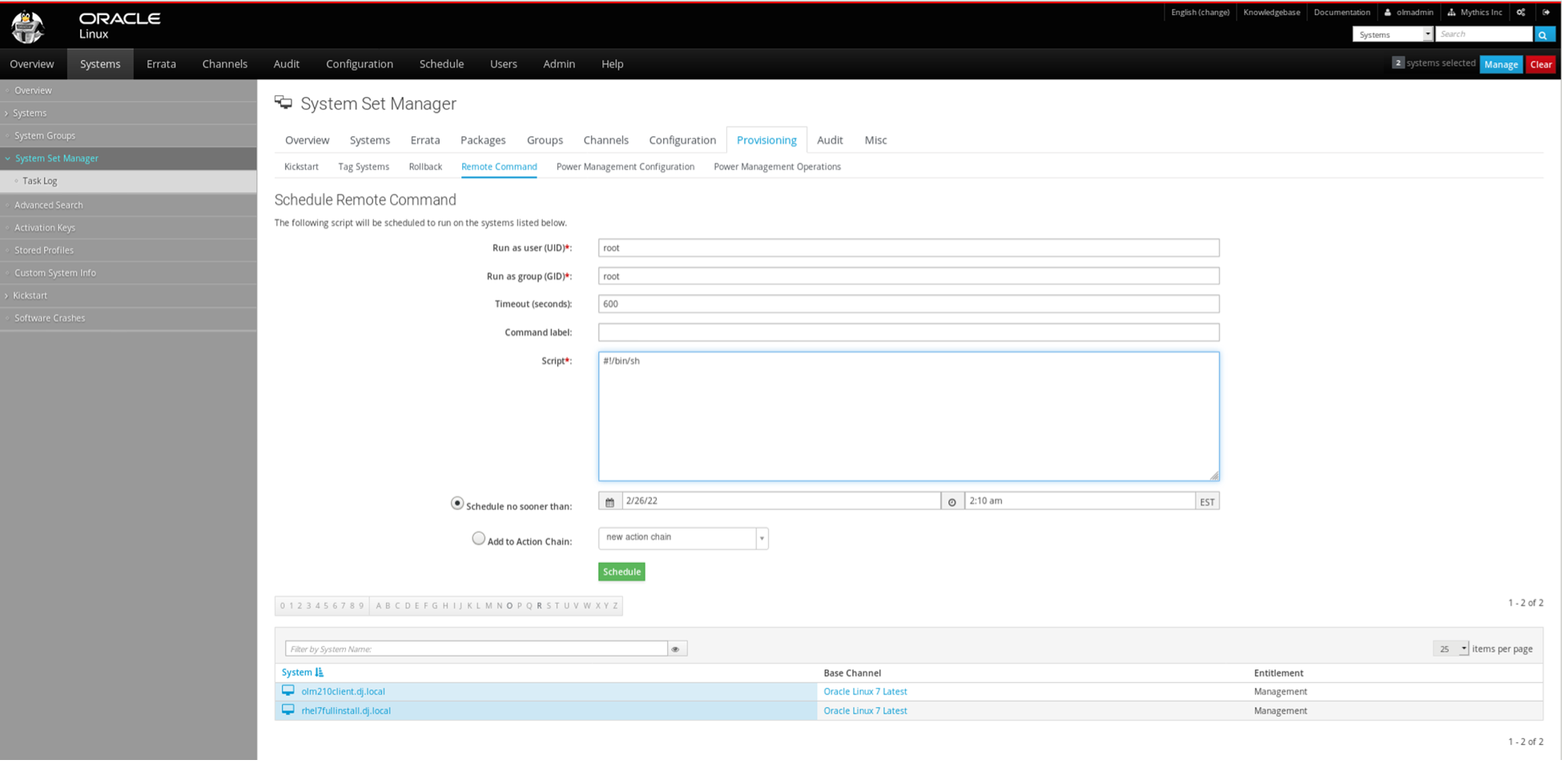In May of 2020 Red Hat shut down the development and support of the Spacewalk project, an open-source systems management system for Linux, stranding customers with no future path to move the technology forward. Oracle has committed to continue developing and supporting Spacewalk technology, rebranding their position as Oracle Linux Manager (OLM). Since then, Oracle has added capabilities to synchronize and distribute Oracle Linux 8 content and other enhancements.
OLM provides tools for managing the Oracle Linux software lifecycle for small to large deployments. OLM is also useful for automating system deployment, configuration, maintenance task and more. Some of the main functionalities include:
- Applying update/errata to client systems
- Provision client systems using Kickstart profiles
- Remote management of client systems
- Audit client systems for security compliance using OpenSCAP
- Configure Ksplice for rebootless patching of client systems
In today's fast-paced organizations some of the most common and frequent tasks for administrators are to provision new systems, apply software updates, security patches and manage software life cycle of systems. These tasks can be very time-consuming and error-prone while done manually. Automation is very critical and necessary for organizations to be more efficient and productive. OLM can be a very useful tool and allows you to automate these tasks in an efficient and effective manner.
OLM is very easy to use. It provides a web interface and the spacecmd command to perform and administer all tasks. We will go over a few core functionalities of OLM with web interface screenshots below.
OLM is free to use but subscribing for support provides additional benefits. With Oracle Linux Support, you can upgrade whenever a new version is available and access to Oracle support 24x7 to report any issues and ask questions. Oracle Linux Premier Support & Basic Support provides support for Oracle Linux Manager and include limited-use license for Oracle Database Enterprise Edition.
CREATING CHANNELS FOR ORACLE LINUX 7
Once OLM 2.10 is installed and configured, you create software channels and repositories. Below is an example of Oracle Linux 7. These repositories will need to be sync with parent repo either Unbreakable Linux (ULN) or public yum server to download the latest patches/packages, etc. You can schedule repositories sync at regular intervals.
The following images shows software channels created for Oracle Linux 7.

Client systems will be registered to OLM and subscribed to appropriate channels. Once you register client system, you can retrieve detailed information about the system like IP address, kernel version, system status, packages installed etc. The image below shows detailed view of a system.

CREATING GROUPS IN ORACLE LINUX 7
Once all client systems are registered, you can group them according to your need. This makes administration easier, especially when handling many systems. You can perform several tasks like schedule packages install/upgrade/remove/verify, manage channel subscription, provision kickstart systems, run remote commands, reboot systems, etc. The following screenshots show packages that will be upgraded for all systems from group “OracleLinux7”.

Another usage of system group is to run remote command on multiple systems. The image below shows the remote command page where you can run any commands on all systems from group “OracleLinux7”.

We just went over some of the task's OLM can help to make administration easier. There are a lot more functionalities that can be achieved using OLM, such as automation of configuration, maintenance and other tasks making it less prone to error. It is a huge plus for system administrators maintaining medium to large environments.
Learn more about Oracle Linux here.